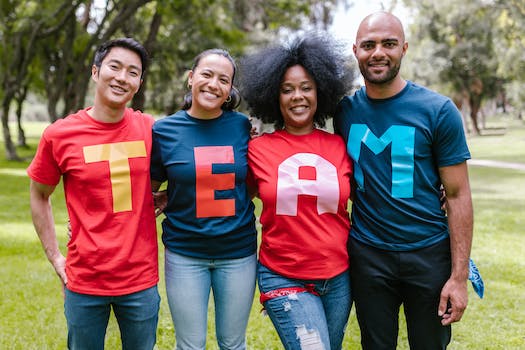

-
Table of Contents
Unveiling the Power of Sports, Media, and PR.
Introduction
The intersection of sports, media, and public relations (PR) is a fascinating and dynamic field that plays a crucial role in shaping the perception and success of athletes, teams, and sporting events. In this era of digital media and constant connectivity, the relationship between sports, media, and PR has become more intertwined than ever before. This intersection involves various aspects such as media coverage, brand management, crisis communication, and strategic messaging. Exploring this intersection provides valuable insights into how sports organizations and athletes navigate the media landscape, build their brand, and engage with their audience.
The Impact of Social Media on Sports Public Relations
The Impact of Social Media on Sports Public Relations
In today's digital age, social media has become an integral part of our lives. It has revolutionized the way we communicate, connect, and consume information. This is especially true in the world of sports, where social media has had a profound impact on the field of public relations.
One of the most significant ways social media has influenced sports public relations is by providing a direct line of communication between athletes, teams, and their fans. In the past, fans relied on traditional media outlets to get updates and news about their favorite teams and players. However, with the rise of social media platforms such as Twitter, Facebook, and Instagram, athletes and teams can now communicate directly with their fans, bypassing traditional media channels.
This direct communication has allowed athletes and teams to control their own narratives and shape their public image. They can share behind-the-scenes content, personal stories, and engage with fans in real-time. This level of transparency and accessibility has humanized athletes and teams, making them more relatable and likable to their fans.
Social media has also given rise to a new breed of sports journalists and influencers. With the ability to reach a large audience through their social media platforms, these individuals have become important players in the sports media landscape. They have the power to shape public opinion, influence narratives, and even break news stories.
This shift in power has forced sports public relations professionals to adapt their strategies. They must now not only work with traditional media outlets but also build relationships with these new influencers. By engaging with them and providing them with exclusive content and access, PR professionals can ensure that their message reaches a wider audience and is portrayed in a positive light.
However, social media has also presented challenges for sports public relations. The speed at which information spreads on social media can be both a blessing and a curse. While it allows for real-time updates and engagement, it also means that misinformation and rumors can spread like wildfire. PR professionals must be vigilant in monitoring social media platforms and addressing any false or damaging information quickly and effectively.
Another challenge is the loss of control over the narrative. With social media, anyone can become a citizen journalist and share their opinions and perspectives. This means that athletes and teams no longer have complete control over how their stories are told. PR professionals must be proactive in managing their clients' online presence, monitoring conversations, and responding to any negative or controversial content.
In conclusion, social media has had a profound impact on sports public relations. It has provided a direct line of communication between athletes, teams, and their fans, allowing for greater transparency and accessibility. It has also given rise to a new breed of sports journalists and influencers, forcing PR professionals to adapt their strategies. However, social media also presents challenges, such as the spread of misinformation and the loss of control over the narrative. Overall, social media has changed the game for sports public relations, and PR professionals must continue to evolve and adapt to this new landscape.
How Sports Media Coverage Shapes Public Perception

Sports have always been a significant part of our society, capturing the attention and imagination of millions of people around the world. From the Olympics to the Super Bowl, sports events have become cultural phenomena that transcend boundaries and bring people together. However, the impact of sports goes beyond the field or the court. It extends into the realm of media and public relations, shaping public perception in ways that are both powerful and influential.
Sports media coverage plays a crucial role in shaping public perception of athletes, teams, and even entire sports. The way a game or an event is presented to the public can influence how people perceive the players, the coaches, and the sport itself. The media has the power to create heroes and villains, to build narratives that capture the imagination of the public, and to shape the way we think about sports.
One way in which sports media coverage shapes public perception is through the selection and framing of stories. Media outlets have limited resources and time, so they must choose which stories to cover and how to present them. This selection process can have a significant impact on how the public perceives athletes and teams. For example, if a media outlet chooses to focus on the personal life of an athlete rather than their performance on the field, it can create a narrative that portrays the athlete in a negative light, regardless of their actual abilities.
Another way in which sports media coverage shapes public perception is through the use of language and imagery. The words and images used by the media to describe athletes and events can influence how the public perceives them. For example, if a media outlet consistently uses words like "aggressive" or "dominant" to describe a particular team, it can create an image of that team as powerful and intimidating. On the other hand, if the same media outlet consistently uses words like "undisciplined" or "unfocused" to describe another team, it can create an image of that team as weak or unreliable.
Furthermore, sports media coverage can also shape public perception through the emphasis placed on certain aspects of the game. For example, if a media outlet consistently focuses on the physicality and violence of a sport, it can create a perception that the sport is dangerous or brutal. On the other hand, if the same media outlet focuses on the strategy and skill involved in the game, it can create a perception that the sport is sophisticated and intellectually stimulating.
Public relations (PR) also plays a significant role in shaping public perception of sports. PR professionals work behind the scenes to manage the image and reputation of athletes, teams, and sports organizations. They use various strategies and tactics to shape public opinion and create a positive narrative around their clients.
One way in which PR shapes public perception is through media relations. PR professionals work closely with journalists and media outlets to ensure that their clients receive positive coverage. They pitch stories, arrange interviews, and provide access to athletes and coaches, all with the goal of shaping the narrative and controlling the message.
PR professionals also use social media and other digital platforms to shape public perception. They create and manage online profiles for their clients, curating content that presents them in a positive light. They engage with fans and followers, responding to comments and addressing concerns, all in an effort to build a positive image and maintain a strong relationship with the public.
In conclusion, sports media coverage and PR play a crucial role in shaping public perception of athletes, teams, and sports. The way a game or an event is presented to the public, the language and imagery used, and the emphasis placed on certain aspects of the game all contribute to how we perceive sports. Similarly, PR professionals work behind the scenes to manage the image and reputation of their clients, using various strategies and tactics to shape public opinion. Understanding the intersection of sports, media, and PR is essential for anyone interested in the world of sports and its impact on society.
Leveraging Sports Sponsorships for Effective PR Campaigns
Exploring the Intersection of Sports, Media, and PR
Leveraging Sports Sponsorships for Effective PR Campaigns
In today's highly competitive business landscape, companies are constantly seeking innovative ways to promote their brand and connect with their target audience. One strategy that has proven to be highly effective is leveraging sports sponsorships for PR campaigns. By aligning their brand with popular sports teams or athletes, companies can tap into the immense popularity and influence of sports to enhance their public image and reach a wider audience.
Sports sponsorships offer a unique opportunity for companies to connect with consumers on an emotional level. Sports have a way of capturing people's attention and evoking strong emotions, whether it's the thrill of victory or the agony of defeat. By associating their brand with these powerful emotions, companies can create a positive perception in the minds of consumers. This emotional connection can be a powerful tool in building brand loyalty and driving customer engagement.
One of the key benefits of leveraging sports sponsorships for PR campaigns is the extensive media coverage that sports events receive. Sports are a major part of the media landscape, with millions of people tuning in to watch games and matches on television or streaming platforms. This widespread media coverage provides companies with a unique opportunity to showcase their brand to a large and diverse audience. By strategically placing their logo or brand name on athletes' jerseys, stadiums, or even in commercials during breaks, companies can ensure that their brand is seen by millions of viewers.
Furthermore, sports sponsorships offer companies the chance to align themselves with the values and aspirations of their target audience. Sports teams and athletes are often seen as role models and symbols of excellence, and by associating their brand with these values, companies can enhance their own reputation. For example, a company that sponsors a team known for its dedication and hard work can position itself as a brand that values these qualities. This alignment can help companies build trust and credibility with their target audience, leading to increased brand loyalty and customer satisfaction.
Another advantage of leveraging sports sponsorships for PR campaigns is the opportunity for experiential marketing. Sports events provide a unique platform for companies to engage with consumers in a memorable and interactive way. By hosting pre-game events, organizing fan contests, or offering exclusive experiences to customers, companies can create a lasting impression and forge a deeper connection with their target audience. These experiences can be highly effective in generating positive word-of-mouth and driving brand awareness.
However, it is important for companies to carefully select the sports teams or athletes they choose to sponsor. The success of a sports sponsorship campaign depends on the alignment between the brand and the sports entity. Companies should consider factors such as the target audience of the sports entity, its values and reputation, and its reach and influence. By conducting thorough research and due diligence, companies can ensure that their sponsorship investment will yield the desired results.
In conclusion, leveraging sports sponsorships for PR campaigns can be a highly effective strategy for companies looking to enhance their public image and connect with their target audience. By aligning their brand with the popularity and influence of sports, companies can create a positive perception in the minds of consumers, generate extensive media coverage, and engage with their target audience in a memorable way. However, it is crucial for companies to carefully select the sports teams or athletes they choose to sponsor to ensure a successful campaign. With the right approach, sports sponsorships can be a powerful tool in driving brand awareness, loyalty, and customer engagement.
Q&A
1. What is the intersection of sports, media, and PR?
The intersection of sports, media, and PR refers to the overlapping areas where these fields interact and influence each other. It involves the strategic use of media and public relations tactics to promote sports events, athletes, teams, and related brands.
2. How does media impact sports and PR?
Media plays a significant role in shaping public perception of sports and athletes. It provides coverage, analysis, and commentary on sports events, which can influence public opinion and the reputation of athletes and teams. PR professionals utilize media channels to manage and enhance the image and reputation of sports entities.
3. What are some examples of sports, media, and PR collaborations?
Examples of collaborations between sports, media, and PR include sports sponsorships, press conferences, media interviews, sports documentaries, social media campaigns, and sports-related news coverage. These collaborations aim to generate publicity, build brand awareness, and engage audiences through various media platforms.
Conclusion
In conclusion, exploring the intersection of sports, media, and PR is crucial in today's digital age. The symbiotic relationship between these three fields has a significant impact on the success and popularity of sports teams, athletes, and events. Effective PR strategies help build a positive image and reputation, while media coverage plays a vital role in promoting sports and engaging fans. The convergence of sports, media, and PR offers numerous opportunities for collaboration and innovation, ultimately shaping the future of the sports industry.












